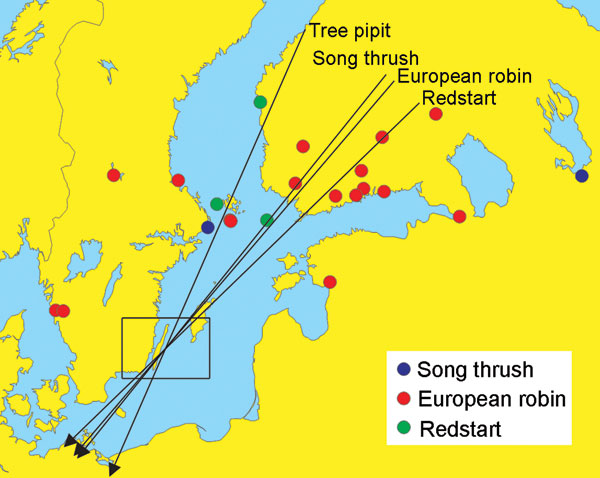Volume 13, Number 8—August 2007
Dispatch
Migrating Birds and Tickborne Encephalitis Virus
Figure

Figure. Autumn migration directions (arrows) of tree pipits (Anthus trivialis), robins (Erithacus rubecula), redstarts (Phoenicurus phoenicurus), and song thrushes (Turdus philomelos) banded in southeastern Sweden (area indicated by a square) and recovered within 60 days. Directions: Tree pipit, 203.6º, mean vector length = 0.993, n = 10; robin, 220.5º, mean vector length = 0.928, n = 293; redstart, 225.9º, mean vector length = 0.975, n = 52; and song thrush, 218.8º, mean vector length = 0.947, n = 117. Recovery sites of birds banded in southeastern Sweden and reported from areas north of the banding sites in a following year are also shown as indicated in the legend (no recovery from breeding areas is available for tree pipit).
Page created: June 30, 2010
Page updated: June 30, 2010
Page reviewed: June 30, 2010
The conclusions, findings, and opinions expressed by authors contributing to this journal do not necessarily reflect the official position of the U.S. Department of Health and Human Services, the Public Health Service, the Centers for Disease Control and Prevention, or the authors' affiliated institutions. Use of trade names is for identification only and does not imply endorsement by any of the groups named above.